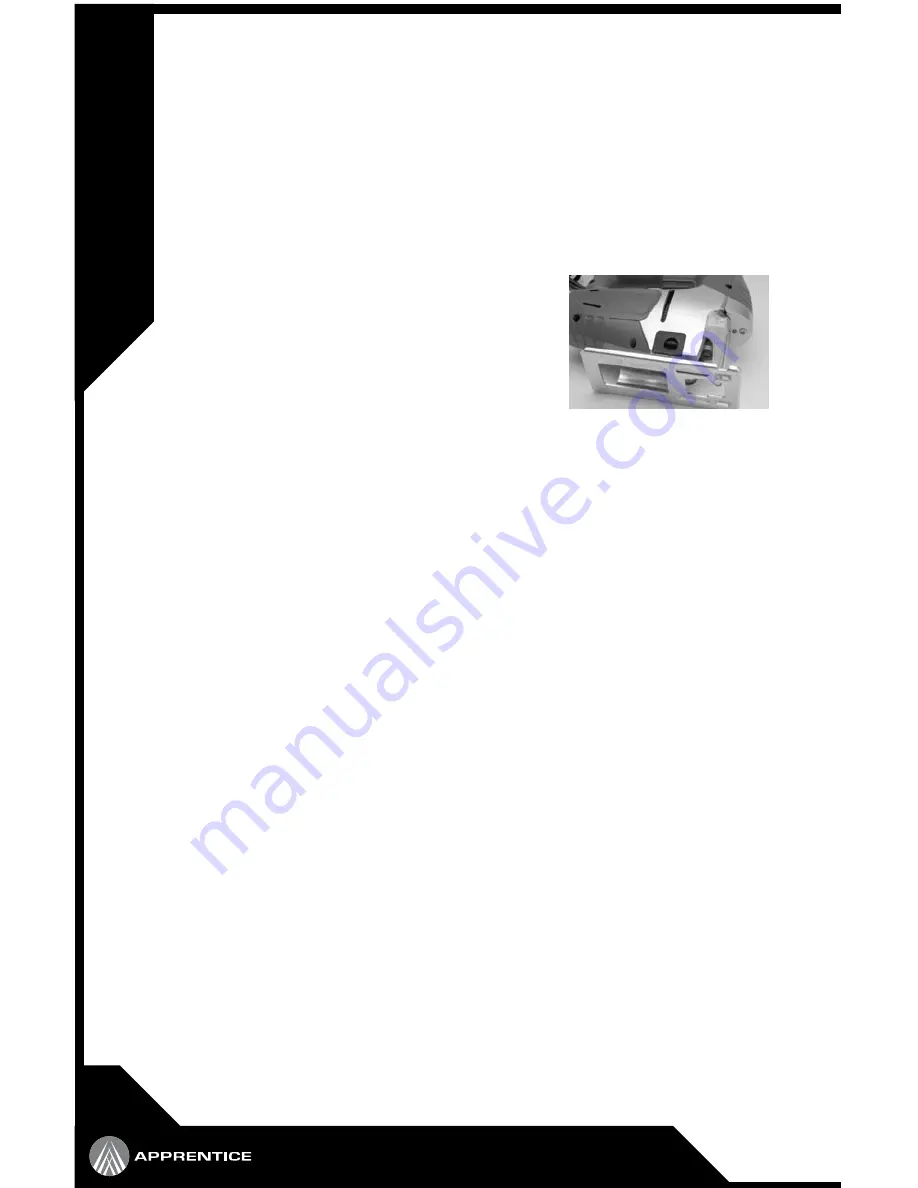
English
12
4.0 Amp Variable Speed Orbital Jig Saw
Operators Manual AJS40
6. Lower the chip shield completely.
To remove the blade
, follow the installation procedure in reverse.
CHIP SHIELD:
CAUTION:
Always cut with the Chip Shield down and hold the base flush with the workpiece.
Failure to do so may cause blade breakage, resulting in a serious injury.
DUST BLOWER:
Your Jig Saw is equiped with a blower that directs air flow to
the cutting area. This feature provide a stream of air that keeps
the dust away from the cut line, improving visibility.
This feature can be turned OFF by rotating the blower switch
to the vertical position. To turn the Blower Feature ON, turn
the blower switch to the horizontal position.
GENERAL CUTTING:
CAUTION:
Always hold the base flush with the workpiece. Failure to do so may cause blade
breakage, resulting in a serious injury.
Advance the tool very slowly when cutting curves or scrolling. Forcing the tool may cause a
slanted cutting surface and blade breakage.
Jig saws cut on the upstroke, causing the workpiece surface facing upwards to splinter.
Therefore, determine the “good” side of your work piece, and place your guidelines for
cutting on the opposite side. Properly support and clamp the workpiece with the “good” side
down, and with the guidelines clearly visible and unobstructed (above & below) the surface
to be cut. To start the cut, place the front edge of the saw base on the workpiece and align
the blade with the previously drawn guideline. Make sure the blade does not contact the
workpiece. Turn the saw on, wait for the blade to attain full speed and slowly move the
blade into the workpiece. Apply only enough downward pressure to keep the saw steady on
the workpiece and only enough forward pressure to keep the blade cutting.
BEVEL CUTTING:
CAUTION:
Always be sure that the tool is switched off and unplugged before tilting the base.
Raise the chip shield all the way before making bevel adjustments and cuts.
To bevel or tilt the saw base, turn the saw over so the base is facing upward and locate the bolt that
secures the base to the saw. Loosen the bolt in the base with the hex key provided. Tilt the base until
the desired bevel angle is obtained, then tighten the bolt to secure the base in place.
INTERIOR CUTOUTS:
An interior cutout is needed when a cutting pattern is located in the workpiece without a lead-in cut
from an edge. These cuts can be performed using one of two methods: either using starting holes or by
plunge cutting.
Using starting holes
Within the cutout pattern, pre-drill one or more holes larger then saw blade being used. Then insert the
blade through the hole(s) to start your cut.
Blower Switch (b)
































